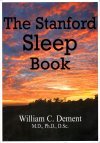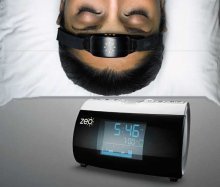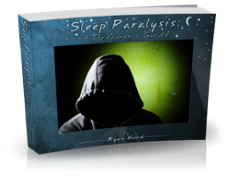
| Connect & Subscribe |
Circadian Rhythms Gone Bad: Students Consumed by Delayed Sleep Phases!
An Outreach Project by Noah Cort, Spring 2010 | Return To Outreach Projects 2010
I was a normal high school student. I woke up every morning at 6:20, took a shower, got dressed, brushed my teeth, grabbed something to eat, and headed on down to Redmond High, sailing into first period English on the heels of the bell.
While I hid the truth from my friends, and most certainly my teachers, I was exhausted for the entire day. Barely managing to stay awake in class I often crashed during lunch, taking power naps in the library when I wasn't frantically attempting to finish my homework. Alas, 5th and 6th period often turned into nap time and as soon as I was home, I would pass out until dinner. But after this I was alert and ready to go for much of the night, having difficulty falling asleep until after 2 or 3 in the morning.
At the time I thought I was simply following the typical sleep schedule of a high school student and even confirmed this with my classmates, realizing that we all suffered from excessive daytime tiredness and were unable to get to bed before 2 AM. Now I realize that we were all suffering from one of the most prevalent disorders among high school students the world over, the dreaded delayed sleep phase syndrome.
One of the forces that keeps us awake and attentive during the day is our circadian rhythms, brought about by our biological clocks. Circadian simply means about 24 hours so our biological clocks follow these daily rhythms creating clock-dependent alerting within our bodies. This keeps us awake at certain times of the day and makes us sleepy at others.
The typical schedule starts with a high degree of alertness in the morning, takes a small dip around noon, increases up to high alertness around 6 PM and then gradually tapers off until about 3 AM, after which the biological clock gradually increases awareness in order to help us wake up and be alert in the morning. While some people have their circadian rhythms slightly advanced, "early birds," or delayed, "night owls," as long as the person is obtaining adequate sleep it is not a problem.
The issue is that some people have their biological clocks so delayed or advanced that they are forced into a sleep schedule that interferes with their lives. Advanced Sleep Phase Syndrome is the advancement of the biological clock so that a person will feel tired and be forced to go to sleep at an inappropriately early hour, consequently waking up very early in the morning.
More common among young people, Delayed Sleep Phase Syndrome is the flip side of the coin--an inability to go to bed until later than the desired time, resulting in a lack of sleep when the individual has to wake up in the morning for work or school, for example.
What is technically going on here is that the biological clock has been delayed so that as the person is ready for bed, their brain is suppressing their sleep drive, leading to an inability to fall asleep. Since the time one must get up to go to school or work is not typically flexible, this can be a serious problem when it causes a buildup of sleep debt.
I recall telling people in school that I suspected I had insomnia since it was so difficult for me to fall asleep at night. Even if I was not procrastinating on an assignment and subsequently rushing through it at the last second, I would regularly be up until 3 in the morning; my body keeping me awake though I desperately sought sleep. Had I known about sleep disorders at the time I would have been able to correctly identify my symptoms as those of a mild case of Delayed Sleep Phase Syndrome and enacted a rather straightforward cure. (To hear about more severe cases that are hard to cure, browse the visitor-submitted stories on this site.)
The problem with circadian rhythm disorders is that they lead to a vicious cycle of sleep deprivation from which it is difficult to escape. I was unable to fall asleep at a reasonable time while still having to wake up very early, causing me to lose the sleep I needed to function. In response, I took naps in class and slept from virtually as soon as I got home until dinner. These desperate attempts to make up my sleep debt only further entrenched this unhealthy system of wake times.
However it would have been very easy to remedy these problems. To advance the biological clock, useful for someone with Delayed Sleep Phase Syndrome who wishes to fall asleep and get up earlier, it is best to go out into the bright sunlight early in the morning and avoid exposure to bright lights later in the day. The converse of this is also true: people with Advanced Sleep Phase Syndrome, who wish to delay their biological clocks in order to go to sleep and get up later, should try and get exposure to light in the evening and limit it in the morning. This works by deceiving the biological clock as to the time of day, helping to change periods of clock dependent alerting, when the brain causes us to feel most active, to times that are more in sync with our schedules.
I'll admit that I was crabby, exhausted, and failed to perform up to my peak potential during high school and am now, thankfully, partially able to blame this on my sleep habits. Sleep is an incredibly important area to health even though it is often neglected. Sleep is not taught about in high school, college, and even medical school. This ignorance can cause people like me who suffered from simple problems a lot of undue stress and exhaustion.
To learn more about sleep I suggest starting with this website, End-Your-Sleep-Deprivation.com--the website of the Sleep and Dreams class at Stanford University in which I was first exposed to information about sleep. While people everywhere may be consumed by sleep disorders, there are often simple solutions that start with basic education. We don't just have miles to go before we sleep, we have miles to go until everyone understands the basics of proper sleep.
Do you have experienced with a delayed sleep phase yourself? Share them with us, or read the stories of others.
Information from this article was obtained from The Stanford Sleep Book by William C. Dement M.D., Ph.D., D.Sc.
About This Site
Welcome! This site is continuously being created by students of Dr. William C. Dement's Sleep And Dreams course at Stanford University.
We made this site as a call to action for people all over the world to live healthier, happier, safer, and more productive lives by learning about their own sleep. We have faith that reading the information provided on this site will motivate you to be smart about your sleep deprivation and strategic about your alertness in order to live life to your fullest, most energetic potential.
In fact, we challenge you to do so! What do you say, are you up for the challenge?
Interviews With Sleep Specialists: Insights Into the Worlds of Sleep Medicine & Sleep Business
America's Most Dangerous Disorder: What Is Sleep Apnea Doing To Your Sleep?
Sleep Debt: How Much More Will You Achieve When You Reduce Yours?
The Stages Of Sleep: The Journey Through The Night
Delayed Sleep Phase: You Want To Sleep But You're Not Tired Yet
Paralyzed at Night: Is Sleep Paralysis Normal?
Sleep In Words: Smart, Strange, and Funny Quotes About Sleep
Sleep Disorders In Children: What's Keeping Your Child From A Full Night's Rest?
Attacks of Pavor Nocturnus (a.k.a. Sleep Terrors, Night Terrors, or Incubus Attacks)
The Stanford Sleep Book
Dr. Dement's pioneering textbook has been the core text for Sleep and Dreams since 1980, but it has just recently been made available to the wider public for the first time.
In it you'll find a more detailed account of the most important things you need to know about sleep, alertness, dreams, and sleep disorders. Studies, statistics, plus plenty of Dr. Dement's classic anecdotes painting the history of sleep medicine.
Preface | Intro | Contents | Get A Copy
More Sleep Resources
The Zeo
A revolution in personal sleep tracking, the Zeo is a wireless headband that transmits your brainwaves in realtime to a dock (pictured here) or your smartphone. The result? You can wake up and see exactly what stages of sleep you were in during the night! Unprecedented personalized sleep knowledge.
Sleep Paralysis: A Dreamer's Guide
Ever woken up paralyzed? A surprising number of us have, believe it or not. But few know the actual causes of this phenomenon, and fewer still how to exert control over it. Dream researcher and sleep paralysis expert Ryan Hurd shares breakthrough insights into how to do just that.
Important Disclaimer
Please Note:
The information found on this page and throughout this site is intended for general information purposes only. While it may prove useful and empowering, it is NOT intended as a substitute for the expertise and judgments of healthcare practitioners.
For more info, see our
Terms of Use.









